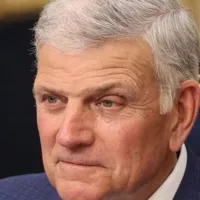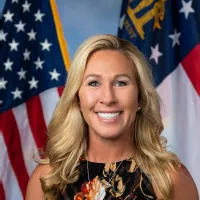John Deere, formally Deere & Company, is a prominent American corporation specializing in the manufacturing of agricultural machinery, heavy equipment, forestry machinery, diesel engines, and drivetrains for various equipment types, including lawn care. Beyond manufacturing, the company also provides financial services and other related offerings. Its widespread presence and recognizable brand make it a key player in both the agricultural and construction sectors.
November 1984: Green Magazine Started
In November 1984, Green Magazine, a publication for John Deere enthusiasts, was started by Richard and Carol Hain of Bee, Nebraska.
November 1984: First Issue of Green Magazine Mailed
In early November 1984, the first issue of Green Magazine was mailed to 135 paid subscribers. It featured 10 black-and-white pages with articles on tractors, letters from readers, and advertisements.
1990: Green Magazine Becomes a Monthly
In 1990, Green Magazine became a monthly publication due to public demand.
2000: Acquisition of Timberjack
In 2000, Timberjack became a subsidiary of John Deere.
2006: Divestiture of Timberjack
In 2006, Timberjack ceased to be a subsidiary of John Deere.
August 2014: Layoff Announcement
In August 2014, Deere & Company announced the indefinite layoff of 600 workers across plants in Illinois, Iowa, and Kansas due to decreased demand for its products.
2016: Electric Farm Tractor Experimentation
As of 2016, Deere & Company was experimenting with an electric farm tractor.
September 2017: Acquisition of Blue River Technology
In September 2017, Deere & Company finalized an agreement to acquire Blue River Technology, a California-based company specializing in applying machine learning to agriculture, particularly in reducing herbicide use through targeted spraying.
2017: Base Year for Emissions Reduction
2017 was used as the base year to calculate Deere's planned reduction in emissions by 15% by 2022.
2017: Leading Division of John Deere
As of 2017, John Deere leasing has expanded to non-equipment loans and is the leading division of John Deere, accounting for a third of John Deere's income with a loan portfolio of $2 billion.
2017: Tax Cuts and Jobs Act
Deere benefited from the Tax Cuts and Jobs Act of 2017, which led to Deere, along with 90 other Fortune 500 companies, paying an effective federal tax rate of 0% or less in 2018.
2018: Zero Federal Tax Rate
During 2018, Deere, along with 90 other Fortune 500 companies, "paid an effective federal tax rate of 0% or less" due to the Tax Cuts and Jobs Act of 2017.
2018: Deere & Company Employment and Electric Tractor Experimentation
In 2018, Deere & Company employed approximately 67,000 individuals globally, with half located in the United States and Canada. As of 2018, it was the largest agriculture machinery company in the world. Additionally, in 2016, the company was experimenting with an electric farm tractor.
August 29, 2019: Samuel R. Allen to Step Down
On August 29, 2019, it was announced that Samuel R. Allen would step down as CEO and president of John Deere.
November 2019: John May Replaces Samuel R. Allen
In November 2019, John May, president of the Worldwide Agriculture and Turf and Integrated Solutions divisions, succeeded Samuel R. Allen as CEO and president of John Deere.
September 2020: CO2e Emissions Report
In September 2020, John Deere reported total CO2e emissions (direct and indirect) for the twelve months ending at 766 Kt (−155/−16.8% y-o-y).
October 2021: United Auto Workers Strike
In October 2021, approximately 10,000 John Deere employees, unionized with the United Auto Workers, initiated a strike following a deadlock in contract negotiations.
January 2022: Introduction of Self-Driving Tractor
In January 2022, John Deere unveiled a self-driving tractor at the Consumer Electronics Show, aimed at large-scale farming. The company's initiative includes connecting 1.5 million machines and half a billion acres to its cloud-based John Deere Operations Center.
February 2022: US Senate Introduces Right to Repair Bill
In February 2022, the US Senate introduced a bill to allow farmers to perform their own repairs on John Deere equipment.
April 2022: Right-to-Repair Bills Introduced in Multiple States
As of April 2022, right-to-repair bills had been introduced in 26 states, addressing the restrictions imposed by John Deere on user and independent mechanic access to software for repairs.
June 2022: Consolidated Lawsuits Over Repair Monopolization
In June 2022, 13 lawsuits from farms and farmers, alleging that John Deere and its affiliated dealerships had unlawfully conspired to monopolize and restrain the market for repair and maintenance services of John Deere equipment, were consolidated in federal court in Illinois.
June 2022: Cessation of Model 3710 Plow Production
In June 2022, Deere & Company announced it would discontinue the production of its model 3710 moldboard plow, while continuing to offer its model 995 reversible plow.
2022: Criticism Over Repair Restrictions and Remote Locking
In 2022, late model John Deere farm equipment has been criticized for repair restrictions, where only John Deere has access to computer code and can accept non-John-Deere replacement parts. In the 2022 Russian invasion of Ukraine, Russian troops stole Ukrainian farm equipment which was remotely locked by the dealers.
2022: Emissions Reduction Goal
John Deere plans to reduce emissions 15% by 2022 from a 2017 base year.
January 9, 2023: Memorandum of Understanding with American Farm Bureau Federation
On January 9, 2023, John Deere signed a memorandum of understanding (MOU) with the American Farm Bureau Federation (AFBF) to allow farmers and independent repair shops access to John Deere software, manuals, and other information for equipment repairs, with some skepticism regarding enforcement and potential restrictions on right-to-repair legislation.
February 2023: Department of Justice Files Statement of Interest
In February 2023, the United States Department of Justice filed a "statement of interest" in the case opposing a motion by John Deere to dismiss the case, arguing that restrictions on repair can harm both consumers and the public.
November 2023: Denial of John Deere's Motion to Dismiss Lawsuit
In November 2023, U.S. District Judge Iain Johnston denied John Deere's motion to dismiss the case, finding that the plaintiffs' complaint "is chock-full of factual allegations to support" the conclusion that "Deere has the ultimate control of the repair services market" for John Deere equipment.
July 2024: Layoffs and Potential Production Shift to Mexico
In July 2024, Deere announced it would lay off 600 employees in its Midwest facilities and is considering moving some components production to Mexico, prompting a threat of 200% tariffs on Mexican-made equipment from Donald Trump.
November 2024: Australia's Right to Repair Reforms
In November 2024, Australian federal and state treasurers entered into a 10-year intergovernmental agreement on national competition policy that the federal treasurer, Jim Chalmers, has said was "an important first step towards delivering broader 'right to repair' reforms ... especially in agriculture and farming".
January 2025: FTC Antitrust Lawsuit Over Repair Policies
In January 2025, the Federal Trade Commission (FTC) filed an antitrust lawsuit against Deere over the company's restrictive repair policies, arguing that Deere inflated repair costs by preventing independent shops from repairing Deere equipment, with five US states joining the lawsuit.
August 2025: Additional Layoffs Due to Economic Factors
In August 2025, Deere announced more layoffs, citing economic factors and decreased demand as the reasons.
Mentioned in this timeline
The United States of America is a federal republic located...
Germany officially the Federal Republic of Germany is a Western...
Australia officially the Commonwealth of Australia encompasses the Australian mainland...
Argentina officially the Argentine Republic is located in the southern...

Dallas is a major city in Texas United States and...
Illinois is a Midwestern U S state bordering Lake Michigan...
Trending
23 days ago Gary Cole Reveals Original 'Brady Bunch' Cast Reaction to 1995 Movie.

7 months ago Adam Sandler in 'Jay Kelly' with George Clooney; Rival movie releases compared.
12 days ago Brandon Williams: Potential Mavericks' Point Guard and Kyrie Irving Replacement?

5 months ago Zach Edey, Grizzlies center, faces reckless driving charge for speeding in Indiana.

22 hours ago Dacre Montgomery Reveals Reason For Five-Year Hollywood Hiatus After Stranger Things Success
1 hour ago Julian Champagnie Achieves Second Consecutive Double-Double, Highlights Include a Big Dunk
Popular
Aftyn Alyssa Behn is an American politician currently serving as...

William Franklin Graham III commonly known as Franklin Graham is...

Candace Owens is an American conservative political commentator and author...

XXXTentacion born Jahseh Dwayne Ricardo Onfroy was a controversial yet...

Marjorie Taylor Greene known as MTG is a U S...

Richard Branson is a prominent English business magnate best known...